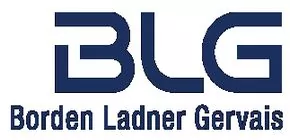Companies involved in the manufacture of automated vehicles, including components and technology, must now file crash reports with the U.S. National Highway Traffic Safety Administration (NHTSA) if the advanced driver assistance system (ADAS) or automated driving system (ADS) was engaged immediately before or during a crash on U.S. roads. In serious crashes, manufacturers must file the report with NHTSA within one day of learning of the crash.
NHTSA's requirement, which was issued as Standing General Order 2021-01 on June 29, 2021, recognizes that SAE Level 3, 4 or 5 ADS vehicles present "new and unique risks to motor vehicle safety" and that Level 2 ADAS vehicles present safety risks "in part due to the unconventional division of responsibility between the vehicle and its human driver."
The order fulfils NHTSA's mandate to proactively "prevent serious injuries stemming from established defects before they occur" by evaluating "whether specific manufacturers (including manufacturers of prototype vehicles and equipment) are meeting their statutory obligations to ensure that their vehicles and equipment are free of defects that pose an unreasonable risk to motor vehicle safety, or are recalled if such a safety defect is identified."
What are companies required to do?
Standing General Order 2021-01 requires any company served with the order to:
- Submit an incident report to NHTSA within one day of receiving
notice of the crash, where:
- a subject vehicle was involved in a crash on a public road in the United States;
- the ADS or ADAS technology was engaged at any time during a period spanning from 30 seconds immediately prior to the commencement of the crash to the conclusion of the crash; and,
- the crash resulted in any of the following:
- an individual being transported to a hospital for medical treatment
- a fatality
- a vehicle tow-away
- an air bag deployment
- injury of a vulnerable road user such as a pedestrian or bicyclist.
- Update the report 10 days after notice of the crash was received.
- Submit a report by the 15th of the following month for incidents that satisfy only points one and two above.
- Update the report monthly with new or additional information. If no such information exists, companies must submit a report confirming there has been no change.
- Submit reports to NHTSA electronically using this form. NHTSA will use the information to identify crashes for follow-up.
"Notice" of a crash is defined broadly and means information received from any internal or external source about an incident that occurred or is alleged to have occurred, regardless of whether the manufacturer has verified those facts. The information can be in any form, including electronic, written and verbal. Sources may include vehicle reports, test reports, crash reports, media reports, consumer or customer reports, claims, demands and lawsuits.
Reports will be publicly available except in limited cases when NHTSA agrees the report contains confidential business information, such as whether the vehicle was within its operational design domain at the time of the incident.
The reporting obligation begins 10 days after the company is served with the order.
What is the impact on Canadian regulation?
Standing General Order 2021-01 is only binding on U.S. companies that have been served. However, the order signals a shift to more proactive U.S. regulatory oversight of existing ADS- and ADAS-equipped vehicles on public roads in the U.S.
Transport Canada, the Canadian counterpart to NHTSA, has previously acknowledged the importance of aligning its practices with those adopted in the U.S. regarding safety assessments of highly automated vehicle technologies. In Canada, apart from the obligation to provide Transport Canada with notice of any vehicle defect, the only mandatory crash reporting is within provincially regulated ADS testing programs. Ontario law, for example, requires mandatory crash reporting of Level 3 – 5 vehicles within 10 days of a collision.
The content of this article is intended to provide a general guide to the subject matter. Specialist advice should be sought about your specific circumstances.


